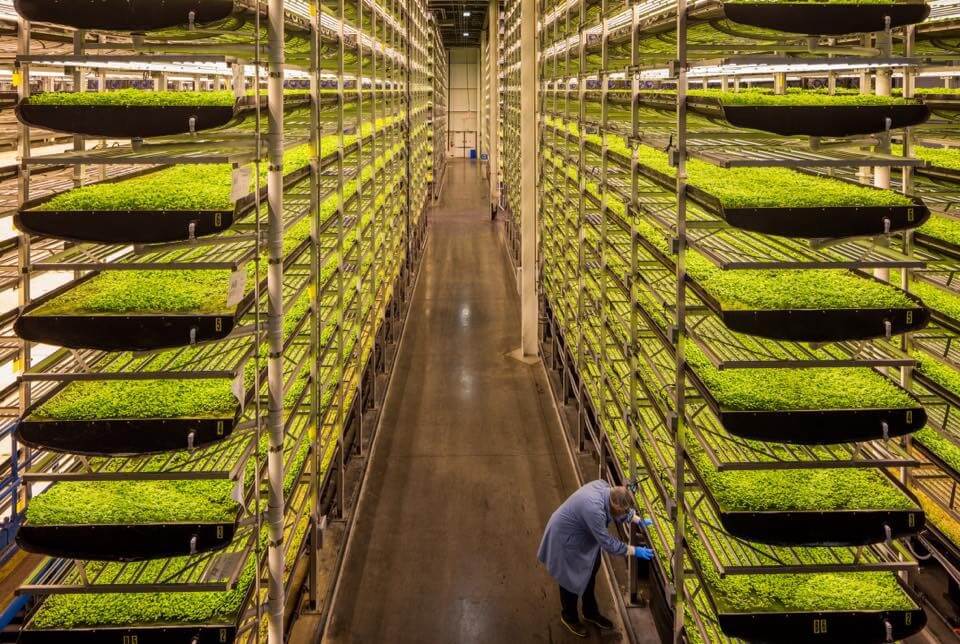During our visit with the brothers at VAST Produce, our tour guide, John, told us something very interesting about how he saw hydroponics and aquaponics advancing in the future. He said it was a “chicken and the egg situation” because he believed that to find major technological breakthroughs that would open the industry to more people, there needs to be more creative minds in the industry in the first place. And it may be hard for many to think about entering this kind of field since the average person can’t picture what a large-scale hydroponic or aquaponic farm looks like.
If you work as a farmer in a large-scale hydroponic farm, then you’ll probably be doing some things that might seem unconventional for a typical farmer. You won’t be working in a sun-lit field; instead, you’ll be working in a warehouse or greenhouse ablaze with LED lights. Rather than driving a combine, you might be busy running data analytics on a computer. Instead of setting up an irrigation line, you might be mixing synthetic fertilizers in buckets. At first glance, hydroponic agriculture might not look like farming at all. Taking a closer look, however, you can see that everything hydroponic farmers do is actually creating a perfect growing environment for crops.
The most recent advances in the field have to do with controlled environments and optimization. The brothers at VAST did this the manual way: they did several trial-and-error tests to determine the best conditions for growing lettuce. A year’s worth of experimentation later, and they’ve optimized the process so well that it only takes about seven weeks for them to get a lettuce plant from seed to harvest. In much larger-scale farms, this process is all done by computers. An army of sensors that measure things like humidity, pH, light levels and CO2 levels all send their information to computer algorithms that track the data and determine the best conditions for growing healthy crops. The application of technology, such as AI, to food production is called “controlled environment agriculture,” and many hydroponic farms use these techniques to grow vast amounts of food. Couple this with the ability of hydroponic farms to exist anywhere regardless of factors like climate, soil quality and water availability, and it’s easy to see why there has been a recent drive toward hydroponic farming.
Per an IBISWorld business report, there are 2,336 hydroponic crop farming businesses in the U.S. That may seem like a lot, but compare that to the over 2 million farm businesses in the U.S. (per the USDA’s most recent survey), and you realize that only a tiny portion of the U.S. agricultural market is hydroponic produce. So, what’s keeping the hydroponic industry from growing? Well, there are still a lot of unanswered questions about how hydroponic-grown plants differ from soil-grown plants. There is an enormous amount of complexity in healthy soil, not just with the chemical content but also with the tons of organisms (from bugs to fungi to bacteria) living in the soil and interacting with plants. Put simply, we can’t replicate those kinds of interactions in hydroponics, and many remain skeptical about the quality of hydroponic crops because of those missing interactions. To further the field, farmers and scientists will have to work together to bridge the gap between soil growing and hydroponic growing. By doing things like introducing microbes to the hydroponics water, farmers can ensure that plants grown in water get all the nutrients and interactions they need to be healthy and delicious. One thing is for sure, though—more and more of our food in the future is going to be grown not in soil, but in hydroponics.






